One of the things I loved most about Portland when I first came here in 2006 was that there were no crowds. I mean anywhere.
You could park right in front of a movie theater five minutes before the show started and by the way, you didn’t have to feed a meter or anything.
So I moved here. Along with, like, 47,000 other people.
And like most of them –– and all of the people who were here before I got here –– I like to complain about how crowded it’s become.
Which it has, but let’s be honest, it’s still nothing like LA or New York. With a few notable exceptions, one of them being Peacock Lane the week before Christmas.

Peacock Lane is Southeast 40th Avenue between Belmont and Stark, which makes it about four blocks long, but since there are no cross streets on SE 40th between Belmont and Stark, it’s really just a lonnnnnnnnng block.
48 weeks out of the year, there’s nothing particularly remarkable about Peacock Lane. It’s just another street with really pretty houses, walking distance to Belmont, Hawthorne, Laurelhurst Park, Mt. Tabor, and Division.
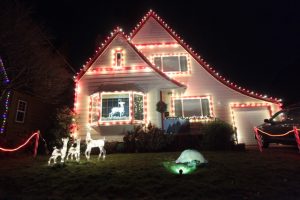
What makes this block special is that the houses on that block go all out with their Christmas decorations. And I mean all out. It’s a tradition that started back to the 1920s and there are a couple of things that make it so very Portland.
In real estate, we deal with Covenants, which are things you’re required to do if you buy a place. And you would think, especially since Peacock Lane is on the US National Register of Historic Places, that there’d be a covenant that makes you decorate your house for Christmas if you live there. But no. People move there because they want to decorate. Nobody tells you that you have to.
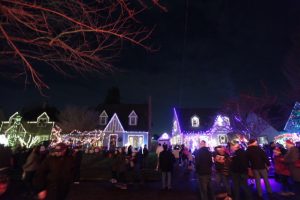 Another thing that makes it totally Portland is that a lot of times, when someone buys a home there, the people selling the home will pass their decorations along to the new buyers. But like I said, one of the things that makes it so very not like Portland is holy crap, it’s crowded! At least for the second half of December. The cops block off the street to car traffic now, which I guess makes it even more Portland. If you live on Peacock Lane and you have an emergency at 5:30 on a December evening –– like you’ve run out of kombucha or something –– you’re sure as heck not getting in your car to get more. I mean, not like you have to. There’s a Walgreen’s right down at the end of the block where, yes, last time I checked they sell kombucha. There’s also a weed dispensary around the corner which used to be this place called Immortal Piano –– broke my heart when it closed because, with a name like Immortal Piano…
Another thing that makes it totally Portland is that a lot of times, when someone buys a home there, the people selling the home will pass their decorations along to the new buyers. But like I said, one of the things that makes it so very not like Portland is holy crap, it’s crowded! At least for the second half of December. The cops block off the street to car traffic now, which I guess makes it even more Portland. If you live on Peacock Lane and you have an emergency at 5:30 on a December evening –– like you’ve run out of kombucha or something –– you’re sure as heck not getting in your car to get more. I mean, not like you have to. There’s a Walgreen’s right down at the end of the block where, yes, last time I checked they sell kombucha. There’s also a weed dispensary around the corner which used to be this place called Immortal Piano –– broke my heart when it closed because, with a name like Immortal Piano…
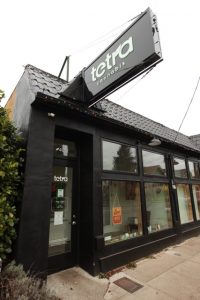
If it’s a cocktail emergency, you’re staggering distance from several good spots, including the Aalto Lounge, where their happy hour is the stuff of legend. From 5:00 to 7:00 you can get a grilled cheese sandwich and a cup of tomato soup for $3! On the way there, you’ll pass a Stumptown Coffee and a Tao of Tea, so pretty much, it’s a neighborhood with everything.
Best of all is Movie Madness, the neighborhood video store. And yes, there’s still a neighborhood with a neighborhood video store, but calling Movie Madness a video store is like calling the Louvre a building with some nice paintings inside.
Movie Madness has a more extensive collection of arcane cinema than any of the places I used to frequent when I was working as a director in New York or LA. They break things down not just by genre and director, but also country and style. You want to binge French caper films from the 1970s? They can totally hook you up.
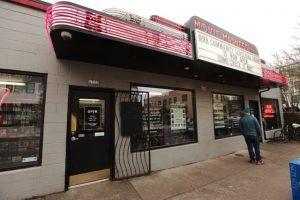 So I know what you’re thinking. You’re thinking, “Well, Brian, that’s all super interesting. Do houses on Peacock Lane cost more than equivalent houses a block or so away?”
So I know what you’re thinking. You’re thinking, “Well, Brian, that’s all super interesting. Do houses on Peacock Lane cost more than equivalent houses a block or so away?”
Great question.
It’s a tough comparison to make because in the past three years, only four houses on Peacock Lane were sold. Those sales took six times as long to close, but the houses went for about 15% more per square foot than houses in the immediately surrounding area.
What that says to me is that Peacock Lane is a neighborhood for a special kind of person. But that person is willing to pay more in order to get to live there.
Got any other real estate (or film) questions? I’m at 310-854-2458.


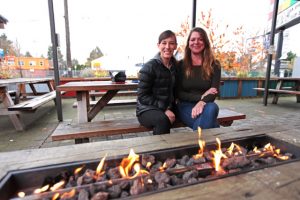
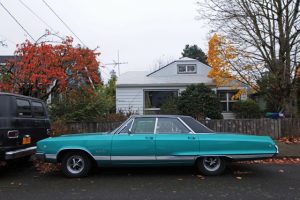
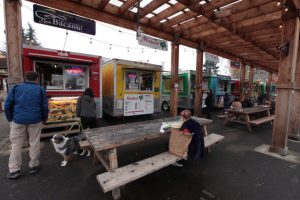
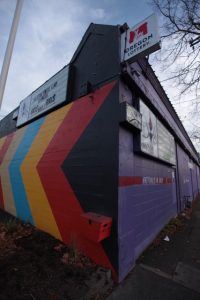
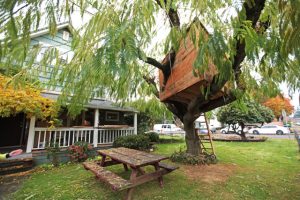
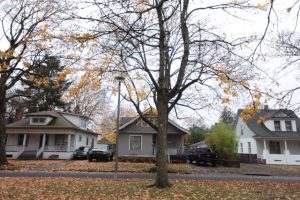
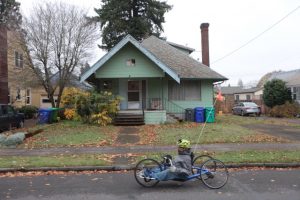 As I mentioned in another post, in Portland we have 20 blocks to a mile so even if you’re out by 82nd, you’re within biking distance of downtown. And it’s a nice ride, too, through Clinton, Ladd’s Addition, and over the Hawthorne bride. You can’t even get lost. Just follow the thousands of other bike commuters making the same trip. It’s a good ride back home. Short enough to do it every day. Strenuous enough that you can justify …you know where I’m going with this …
As I mentioned in another post, in Portland we have 20 blocks to a mile so even if you’re out by 82nd, you’re within biking distance of downtown. And it’s a nice ride, too, through Clinton, Ladd’s Addition, and over the Hawthorne bride. You can’t even get lost. Just follow the thousands of other bike commuters making the same trip. It’s a good ride back home. Short enough to do it every day. Strenuous enough that you can justify …you know where I’m going with this …
 Let me start by saying we’re not curing cancer here. I know that. What we do is help people do something they’re going to do anyway.
Let me start by saying we’re not curing cancer here. I know that. What we do is help people do something they’re going to do anyway.
 People, though. People can be happy.
People, though. People can be happy.
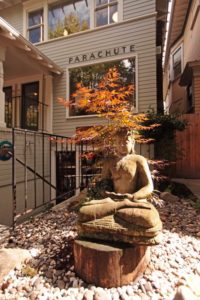
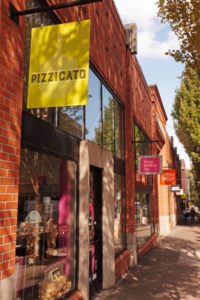
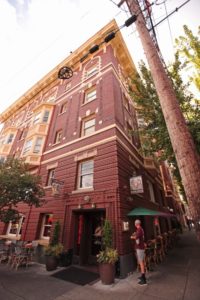
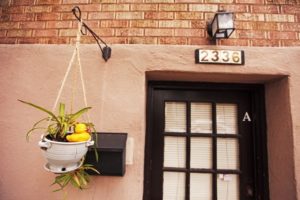 As you can tell from the address, NW 23rd is 23 blocks from the Willamette River, which is just over a mile (blocks in Portland are shorter than they are in a lot of other cities). In between, you have non-stop interesting stuff: NW 21st is kind of the Clinton to 23rd’s Division (see my post on Division here, and on Clinton here). They’re super close, but different enough that people who live there tend to identify with one or the other.
As you can tell from the address, NW 23rd is 23 blocks from the Willamette River, which is just over a mile (blocks in Portland are shorter than they are in a lot of other cities). In between, you have non-stop interesting stuff: NW 21st is kind of the Clinton to 23rd’s Division (see my post on Division here, and on Clinton here). They’re super close, but different enough that people who live there tend to identify with one or the other.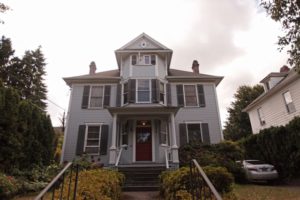
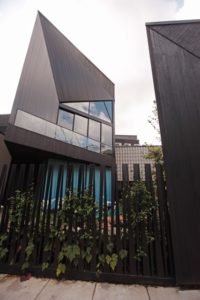

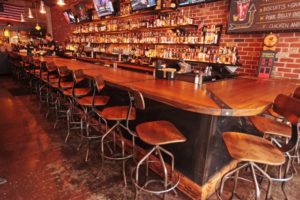




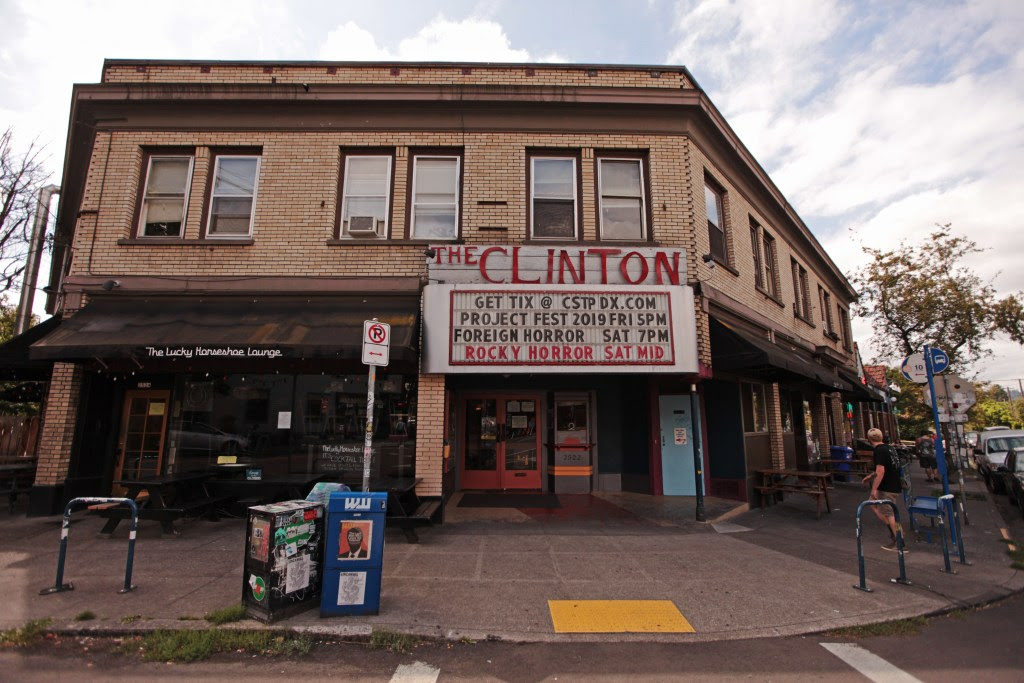
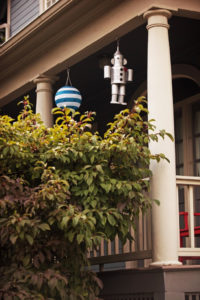 I’ve already gone on about Division (
I’ve already gone on about Division (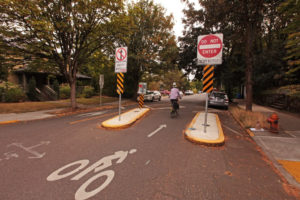
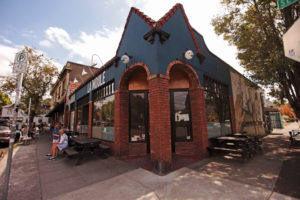
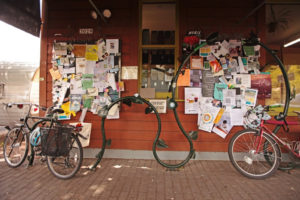 You also have two optometrists, a boutique that sells kid stuff …even two real estate offices.
You also have two optometrists, a boutique that sells kid stuff …even two real estate offices.
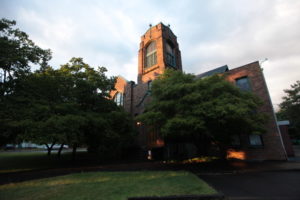
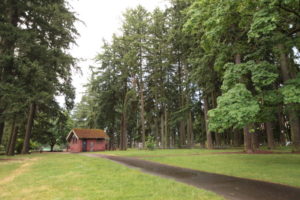
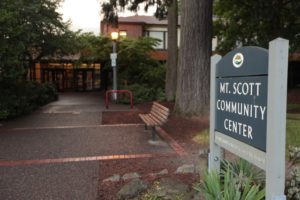 Okay, I lied. The Mt. Scott community Center is the centerpiece of the neighborhood. It’s adjacent to or maybe in the park and has two swimming pools – one that’s great for lap swimming and water aerobics and the other that’s built just for kids, with a slide, whirlpool, buckets that splash water on top of you, and a wading area that graaaaaaaadually gets deeper and deeper until the water comes all the way up to your knee.
Okay, I lied. The Mt. Scott community Center is the centerpiece of the neighborhood. It’s adjacent to or maybe in the park and has two swimming pools – one that’s great for lap swimming and water aerobics and the other that’s built just for kids, with a slide, whirlpool, buckets that splash water on top of you, and a wading area that graaaaaaaadually gets deeper and deeper until the water comes all the way up to your knee.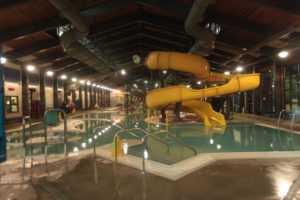
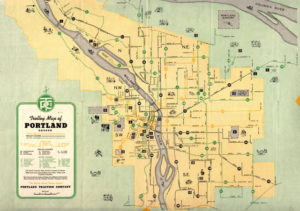 I was also told that the Arleta Triangle, a weird orphan of land that’s cut off from the southwest corner of the park at SE 72nd and Woodstock, came about because trolley tracks were laid to cut the corner of the park, leaving a little triangle of land all sad and lonely out there in the middle of the intersection. It sounds convincing, but according to the 1942 trolley route map I dug up, the trolley didn’t go anywhere near that corner. And also, it wasn’t called the Mt. Scott Trolley.
I was also told that the Arleta Triangle, a weird orphan of land that’s cut off from the southwest corner of the park at SE 72nd and Woodstock, came about because trolley tracks were laid to cut the corner of the park, leaving a little triangle of land all sad and lonely out there in the middle of the intersection. It sounds convincing, but according to the 1942 trolley route map I dug up, the trolley didn’t go anywhere near that corner. And also, it wasn’t called the Mt. Scott Trolley.

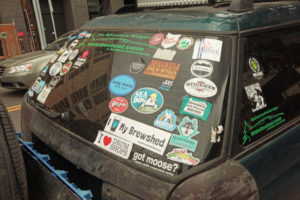 The timing was perfect for hippies. San Francisco was getting pricey. So tons of them hitchhiked up north to a land where you could drive a VW bus 20 minutes in almost any direction and find yourself in a gloriously beautiful setting –– you could take a quick hike through misty woods, pluck a couple of psychedelic mushrooms, and bliss out naked in a hot spring.
The timing was perfect for hippies. San Francisco was getting pricey. So tons of them hitchhiked up north to a land where you could drive a VW bus 20 minutes in almost any direction and find yourself in a gloriously beautiful setting –– you could take a quick hike through misty woods, pluck a couple of psychedelic mushrooms, and bliss out naked in a hot spring.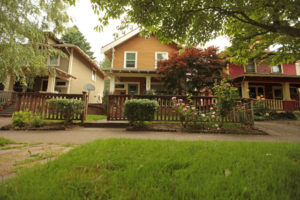 The hippies turned their craftsman houses into goat barns, pottery studios, rooming houses, and mini ashrams. They didn’t have the money (or inclination) to tear the houses down and build modern houses, but they put enough love and care into them to keep them from falling completely apart.
The hippies turned their craftsman houses into goat barns, pottery studios, rooming houses, and mini ashrams. They didn’t have the money (or inclination) to tear the houses down and build modern houses, but they put enough love and care into them to keep them from falling completely apart.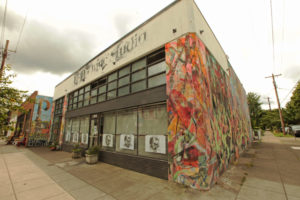 About 15 years ago, I can’t remember who, but some adventurous chef decided to open a restaurant on SE Division, driven mostly by how inexpensive the property was. The restaurant became a media darling and other chefs came in with their restaurants. Soon Division became a culinary destination. That’s about the time that I moved into the neighborhood. I used to walk five blocks to Pok Pok, sit down, and have a great lunch. Now you have to wait in line for an hour to get in.
About 15 years ago, I can’t remember who, but some adventurous chef decided to open a restaurant on SE Division, driven mostly by how inexpensive the property was. The restaurant became a media darling and other chefs came in with their restaurants. Soon Division became a culinary destination. That’s about the time that I moved into the neighborhood. I used to walk five blocks to Pok Pok, sit down, and have a great lunch. Now you have to wait in line for an hour to get in.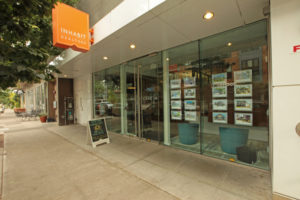
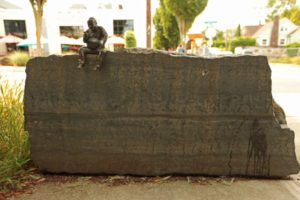 Division is super close to downtown. You just hop on your bike and pedal thirty some-odd blocks and you’re at the river. Take the Hawthorne Bridge across and bam, you’re there. Bonus, Hawthorne is about a half mile to the north and Clinton is two blocks south and a little west. Getting to the airport is pretty easy, too. Just head east to the 205 Freeway and go north. It used to take me 20 minutes. I suppose now it’s 35 when there’s traffic.
Division is super close to downtown. You just hop on your bike and pedal thirty some-odd blocks and you’re at the river. Take the Hawthorne Bridge across and bam, you’re there. Bonus, Hawthorne is about a half mile to the north and Clinton is two blocks south and a little west. Getting to the airport is pretty easy, too. Just head east to the 205 Freeway and go north. It used to take me 20 minutes. I suppose now it’s 35 when there’s traffic.